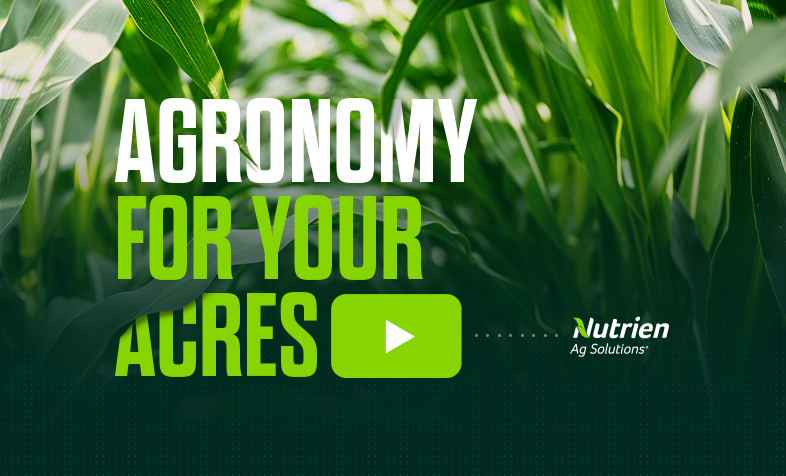Posted November 05, 2024 | By: Nutrien Ag Solutions
Agronomy for your Acres - Episode 16 Tyler Morgan
Crop Consultant Tyler Morgan shares his advice for next year's seed selection keeping Minnesota's yield variability in mind.
Episode Transcript:
Hello, everyone, and thanks for joining us here for This Week in Agribusiness. I'm Mike Pearson. Across the Northern Corn Belt this growing season, exceptionally dry weather clipped crop yields, but it also allowed for a very fast harvest pace.
Now that those combines have been put away, thoughts are turning ahead to next year. Joining me this week to discuss it is Tyler Morgan. He's a Crop Consultant with Nutrien Ag Solutions and he joins us this week to discuss agronomy for your acres. Tyler, it looks like you folks finally caught a little moisture up there. Yeah. First time here in a month plus.
We've gotten a good rainfall, so it'll be really helpful here for fall tillage. A lot of guys are kind of holding off because of how hard the ground had gotten here with the dry spell. So, it'll be nice to get the wheels turning again around here. So they'll start moving and reflecting, I bet, back on a little bit of this growing season.
Tyler, I've heard reports of exceptional yield variability across the state. How does this year's weather shape the advice you give to farmers as they're planning their next season's crop? We're telling a lot of them to take it with a grain of salt. You know, we're seeing our field averages ranging from 80 to 100 bushel corn in the worst scenarios to 240 on some farm operations in this area and even southeast Minnesota in the garden spots down there.
I've heard of some 280 plus field averages. So we're, you know, take baby steps and really analyze what caused those yields to happen and, you know, adjust for next year accordingly. That analysis is key. Tyler, with new hybrids coming on the market, how much weight should growers give to plot results? I think looking at just a single plot is really difficult to put too much weight in, but you need to make sure you're compiling a good data set and making it.
I mean, the bigger the better. It just washes out some of those one-off scenarios where something could have happened with one hybrid being on tile line or in a sprayer rut through something like that. So I think the bigger the data, the better when it comes to the plot results and really analyzing what you're looking at for next year.
That certainly makes a lot of sense. Now, Tyler, given the exceptional weather variability this year in Minnesota, 90% of the state at one point in a drought, what can farmers take away for this next growing season?
I think the biggest thing is to really, you know, have an initial plan, work with your agronomist and make sure you lay out what your plan is, but be ready to pivot and adapt to the weather. We had record rainfalls this spring that really affected getting pre-emergence on and getting side dressing done, and we had to change plans rapidly to kind of try to keep up and adjust the weather and then into this fall with this dry spell, you know, the drought that kicked in, it was same thing, trying to keep up through harvest and keep ahead of the changing weather.
Keeping ahead of everything, that's the name of the game in farming. Tyler, with P and K prices fluctuating this time of year, what are some factors farmers should consider when they're thinking through their fertility?
You know, the biggest thing is to first soil sample and know what you really have going on out there and what your crop really needs. You know, going in blind to what the field needs is not a good plan to me. So, we always try to make sure we get that figured out first. Then the next step is to again, work with your agronomist, work through your budget and see what your cash flows look like in your situations and try to shape a plan around that.
You know, some guys are waiting until spring here just cashflow wise with these lower yields and hopefully softening prices on a fertilizer side of things. But if you can get it on in the fall, it’s typically the best just so we know it's there and ready for spring because we again, don't know what the weather going to give us next spring.
So that's right, it's all about that preparation. Tyler Morgan, Crop Consultant with Nutrien Ag Solutions, thanks so much for joining us this week. Thank you, Mike. And folks, you can learn more by visiting NutrienAgSolutions.com.
FEATURED LINKS
NEWSLETTER
Want to stay caught up in all things agriculture? Sign up for the newsletter and get all the latest news straight to your inbox.






